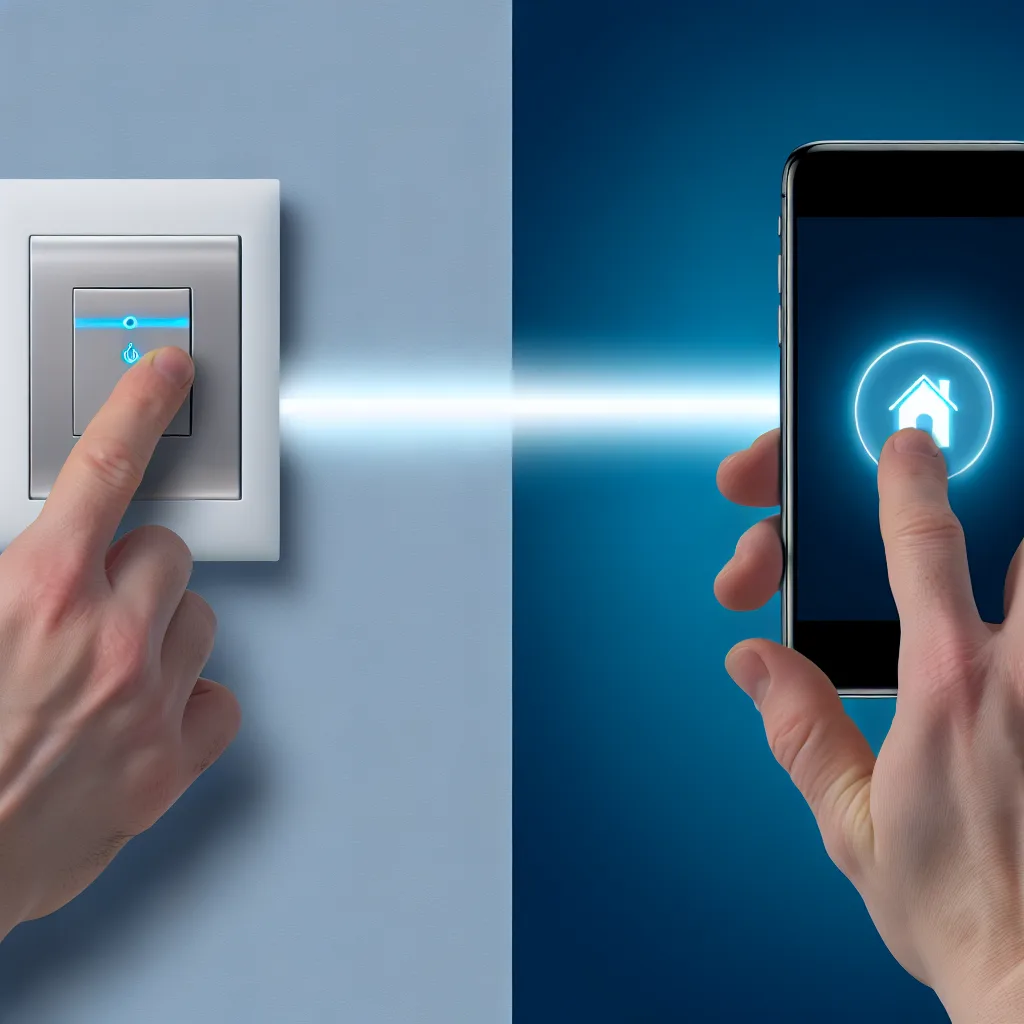Stop the guesswork. We’ll break down the difference between the standard and Pro bridge for a seamless Caseta Alarm.com integration.
So, you’ve decided to upgrade your home with sleek Lutron Caseta dimmer switches, and you want them to play nicely with your Alarm.com security system. That’s a fantastic move. The ability to have your lights react to your security system—turning on when a door opens at night, for instance—is one of those smart home features that just works.
But then you start shopping, and you hit a wall of confusing choices. You see mentions of a “Smart Bridge” and a “Smart Bridge PRO,” and it’s not immediately clear which one you need. I’ve been there, and it can be frustrating when you’re just trying to get a simple answer. The good news is that getting your Caseta Alarm.com integration right is much simpler than it seems, and it all comes down to one key device.
Let’s clear up the confusion for good.
What’s the Lutron Smart Bridge, Anyway?
Before we dive into the “Pro” versus “Standard” debate, let’s quickly talk about what this little white box even does. The Lutron Smart Bridge is the heart of your Caseta system. It plugs directly into your Wi-Fi router and acts as a translator.
Your Caseta dimmer switches don’t connect directly to your Wi-Fi. Instead, they use a super-reliable wireless signal called Clear Connect to talk to the Smart Bridge. The bridge then takes those signals and puts them on your home network, allowing you to control them from your phone, your voice assistant, or—you guessed it—other smart home systems. Without the bridge, your dimmers are just fancy-looking wall switches.
Your Key to a Smooth Caseta Alarm.com Integration: The Pro Bridge
Here’s the main point, right up front: If you want to connect your Lutron Caseta system to Alarm.com, you absolutely, positively need the Lutron Smart Bridge PRO.
This isn’t an upsell or a “nice-to-have” feature. The standard, regular Smart Bridge that often comes in starter kits will not work with Alarm.com. I know, it’s a little annoying that it’s not more obvious on the packaging.
So, what makes the Pro model so special? The Smart Bridge PRO includes an extra integration technology (specifically, a Telnet connection) that allows it to communicate with third-party control systems. Think of it like this:
- The Standard Smart Bridge speaks the most common languages, like Amazon Alexa, Google Assistant, and Apple HomeKit. It’s perfect for the average user who just wants app and voice control.
- The Smart Bridge PRO speaks all those languages, plus the special, more technical languages required by professional-grade systems like Alarm.com, Control4, Savant, and others.
Alarm.com is a professionally installed and monitored platform, so it requires that more robust, professional-level communication channel that only the Pro bridge offers. You can find it under the model number L-BDGPRO2-WH.
Getting Your Caseta Alarm.com Integration Up and Running
Once you have the right hardware—your Caseta dimmers and the Smart Bridge PRO—the setup process is pretty straightforward, but it’s a two-part process.
- You Handle the Lutron Side: First, you’ll install the physical dimmer switches (always a good idea to hire an electrician if you’re not comfortable with wiring). Then, you’ll plug in your Smart Bridge PRO and use the official Lutron App to set everything up. You’ll add your dimmers, name your rooms, and create a few lighting scenes. Get this part working perfectly before even thinking about Alarm.com.
- Your Provider Handles the Alarm.com Side: This is the part you don’t do yourself. To get the two systems talking, you need to contact your Alarm.com service provider (the company that installed your security system). They have to enable the integration on their end. You’ll give them the details from your Smart Bridge PRO, and they will link it to your Alarm.com account through their dealer portal. It usually only takes them a few minutes.
Once they flip the switch on their end, your Lutron devices will magically appear inside your Alarm.com app. From there, you can create all sorts of cool rules:
- Turn on the porch light when the doorbell camera detects motion after sunset.
- Flash the living room lights if a security alarm is triggered.
- Turn off all the lights in the house automatically when you arm your system to “Away.”
It’s this deep level of integration that makes getting the right bridge totally worth it. While the initial confusion is a hurdle, the result is a smarter, more cohesive home. For more information on what’s possible, Alarm.com has a great overview of how lighting can enhance your security.
So don’t sweat the confusion. Just remember the golden rule: for Alarm.com, it has to be the Pro.
